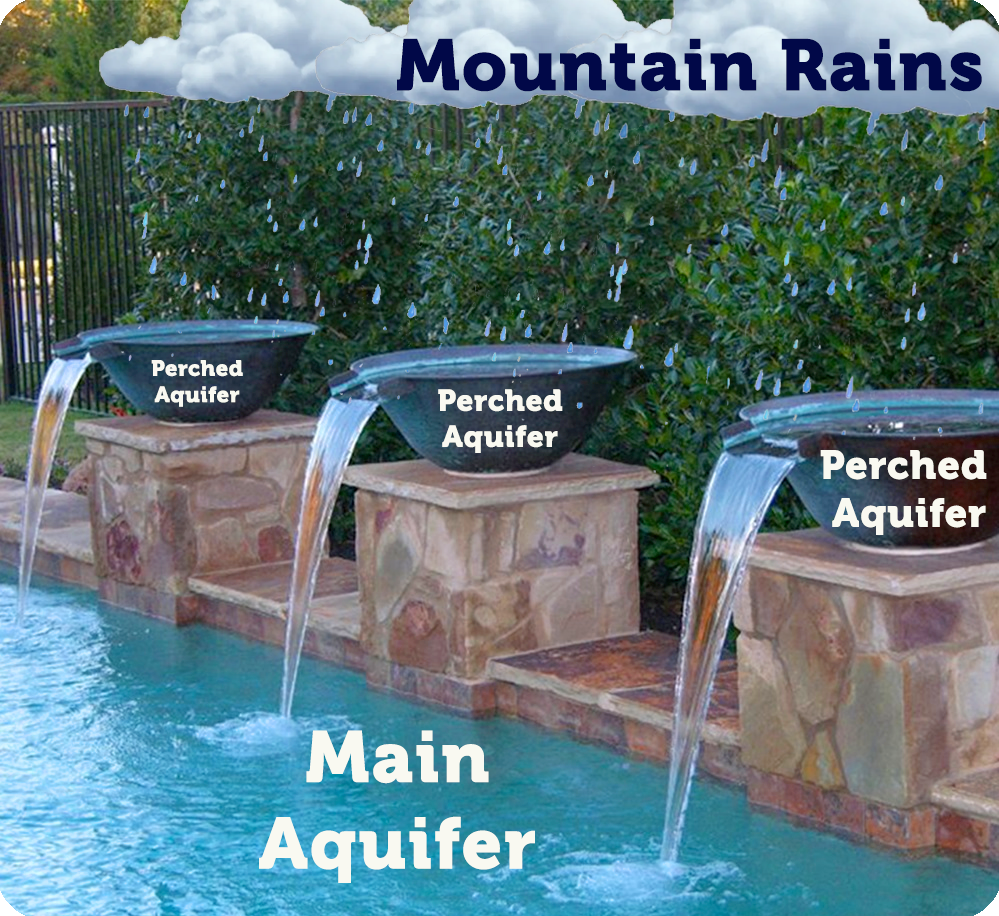Republican Rep. Gail Griffin’s House Natural Resources, Energy and Water Committee had its first substantive meeting this week, hearing 10 new bills, all of which she sponsored or co-sponsored.
We’ll be keeping up with water-related legislation on the regular, and a lot of it will be bad, and a lot of it will be surprisingly bad.
Griffin’s HB2088 and HB2089 can both be filed under “Chaotic AMA Sunset Bills,” and they both passed through her committee on Tuesday on a party-line vote.
The pair of bills creates pathways to eliminate or “sunset” Arizona’s “Subsequent Active Management Areas (AMA)”, which today include only the shiny new Douglas and Willcox AMAs, but not the state’s five “Initial AMAs,” the Phoenix, Pinal, Tucson, Prescott and Santa Cruz AMAs.
HB2088 requires the Arizona Department of Water Resources director to periodically review Subsequent AMAs. If the director finds that an area within the AMA “no longer meets the criteria for inclusion as a Subsequent Active Management Area, the director may remove the Subsequent Active Management Area Designation.”
The bill’s language is hydrologically, semantically and statutorily confused.
Does it mean that a specific area within an AMA would lose its designation — or the entire AMA? The bill isn’t clear. But neither interpretation makes for good policy.
Arizona law requires AMAs to be designated on a basin-wide basis. It wouldn’t make sense to limit pumping in one part of the underground bathtub while the same supply of water can be pumped to death elsewhere.
But basin hydrogeology isn’t quite as simple as an underground bathtub. Think about a mountain range with its ridges, valleys, lakes and waterfalls. Underground, there can be just as much topographic diversity.
You can’t make simple assumptions about aquifer logic.
Imagine a garden hose running water into a bowl. When that bowl fills up, the water spills over into a bigger bowl below.
You could start siphoning water out of the upper bowl, and as long as you don't take more than you’re getting from the hose, your bowl stays full.
But now, less water is spilling over into the lower bowl. So if you’re also siphoning water out of the lower bowl, and you’re not getting enough spillover to keep up with the siphoning, the water level will start to decline.
In this analogy, the garden hose is a basin’s water supply, like the “mountain-front recharge” that happens when rain percolates into an aquifer at the base of the surrounding mountains.
The higher water fountain bowl is similar to what's called a “perched aquifer” -- filling up from the mountain rains and possibly overflowing into the main aquifer.
And the lower fountain bowl is that main aquifer.This cartoonish analogy hardly captures the complexity of a groundwater basin. But it can help explain why in a single groundwater basin, some water levels might be declining, while others remain stable, and others might even be rising.
So, looking at a single “area” in an AMA isn’t going to give you the full picture of what’s going on underground. Nor does Griffin’s HB2088 give any instruction on how an “area” should be defined.
The other bill, HB2089, would allow residents in a Subsequent AMA to petition for a special election to remove an AMA designation ten years after the original designation. But the ADWR director can cancel that vote if a basin still meets AMA criteria.
There are two major problems with these sunset provisions.
The first is that, even if a basin manages to stabilize its water tables, regulations will be needed to maintain that stabilization. Taking away an AMA designation is like plugging a leak and then saying, “ok, the problem is fixed, time to take the plug back out.”
The other problem is that a sunset option allows corporate agriculture to gamify groundwater regulations to their advantage.
In areas like the Douglas and Willcox AMAs, stabilizing groundwater levels is almost entirely dependent on reducing agricultural water use. These AMA-required cutbacks will be hardest on your small local farmers with narrower profit margins. And that means they’ll be more likely to close up shop or sell out to industrial ag outfits.
Meanwhile, those industrial mega-farms can weather a hit to their profits without keeling over. In fact, the history of agricultural consolidation is largely a story of bigger fish buying out smaller fish during economic downturns.
So, temporary restrictions on water use can benefit the bigger users if it means they get to gobble up their smaller neighboring farms.
Then, they can pressure ADWR, directly or through the Legislature or a governor, to declare: “Hey, things are looking up — we can retire those pesky regulations.”
Tighten the belt. Strangle out the little guys. Loosen the belt again.
That’s what AMA sunsets offer.
Making it rain: The upper and lower basin states are still at loggerheads in negotiating upcoming Colorado River water reductions, with the Upper Basin states not wanting to cut back at all. Republican Rep. Gail Griffin’s HB2103 would authorize a $1 million appropriation to the Department of Water Resources for potential litigation against the Upper Basin states if the stalemate doesn’t resolve. The bill passed with unanimous approval from the House NREW committee. But the committee’s Democrats want to amend the bill and boost that number to $3 million, as Gov. Katie Hobbs asked for in her annual budget proposal.
Snickers, Pfaff, Ploog & Jablow: Arizona Water Company wants to raise its rates by 50% and Sedona’s City Council collectively shrugged at a recent council meeting, per the Red Rock News’ Tim Perry. Councilman Derek Pfaff skipped the debate, since AWC is a client of his law firm, while Vice Mayor Holli Ploog took shots at AWC’s investor priorities. John Snickers, an AWC manager, promised bigger pipes and booster stations, and Mayor Scott Jablow expressed zero interest in taking a stance. The council ultimately decided not to take any position on the proposed hike, which the Arizona Corporation Commission is currently weighing.
“The reality is, the ACC is awfully friendly to utilities,” commented Councilman Brian Fultz. “What I hear you saying is it is very likely that an additional surcharge fee, amount TBD, will get added on to this.”
PFAS are in, fluoride is out: Shortly after Attorney General Kris Mayes joined a coalition of states in a legal filing defending the Biden EPA’s expansion of PFAS restrictions for drinking water, the new Trump EPA rolled back the agency’s studies and regulations on these “forever chemicals,” per AZFamily’s Alexis Dominguez. Meanwhile, Robert F. Kennedy Jr., now heading the U.S Department of Health and Human Services, wants fluoride out of public water, citing health risks based on questionable interpretations of recent studies.
Rain check: U.S. Sens. Ruben Gallego and Mark Kelly recently celebrated $257 million in funding for Arizona water projects from former President Joe Biden’s Inflation Reduction Act. Tucson would get $86.6 million for a wastewater treatment plant, SRP and the CAP would snag $154 million to shuffle their water around more efficiently, and Gilbert would pocket $20.8 million for leak-detecting smart meters and an upgrade to water conservation at their Riparian Preserve. The memo came one day after President Donald Trump issued an order to freeze the monies from the Inflation Reduction Act, jeopardizing hundreds of millions in awards for conservation projects among the Colorado Basin states — an order which he rescinded yesterday. Meanwhile, Mayes had joined 22 other states in a lawsuit challenging the freeze.
“This is bullshit,” Mayes claims one Arizona border sheriff told her about Trump’s funding freeze.
Fighting drought with fire: When the West Fire sparked north of Payson last August, people were thrilled. Salt River Project, in partnership with corporations like PepsiCo and Google, have been investing millions into thinning the forest near SRP’s reservoirs so that wildfires are restorative rather than destructive, the Republic’s Brandon Loomis explains. Engineered firebreaks limited the fire’s spread, and the thinned-out vegetation means more rain and snowmelt makes its way down to the reservoirs. The Arizona Game and Fish Department just received $24.5 million for similar projects, KTAR’s Damon Allred reports
Charts and graphs: The Land Desk’s Jonathan P. Thompson breaks down highlights from the U.S. Geological Surveys’ recently published National Water Availability Assessment Report. Thompson points out that water use is higher in years with less rainfall — which makes sense considering that rainfall has to be substituted with groundwater for uses like agriculture and turf.
Water is life: Anti-immigration vigilantes spend their free time harassing the “Tucson Samaritans” who provide essential resources to migrants attempting to cross the border, sometimes by shooting holes in the water jugs the Samaritans leave for migrants, Mexico Daily News writes.
Phoenix narrowly missed breaking its record for the longest dry spell, which was set in 1972. The Valley was at 159 days without rain and closing in on the 160-day benchmark before yesterday’s scattered showers. The current dry spell is exacerbated by La Niña conditions, and only 4.5 inches of rain fell in 2024 compared to the typical 7.2 inches. Impacts include heightened wildfire risks, potential crop failures, stressed wildlife populations and a surge in heat-related fatalities.
The lack of precipitation means weaker forecasts for water flows into Lake Mead. Estimates put us at just 76% of the seasonal average, according to the National Weather Service.
Welcome to Extra Credit, a supplemental section of the Water Agenda with offerings for paid subscribers including recommendations for books, films and podcasts, funny news items and other goodies.
Today we’ve got a film review and some powerful quotes from a recent documentary about corporate land and water acquisitions in Arizona and beyond.
Keep reading with a 7-day free trial
Subscribe to Water Agenda to keep reading this post and get 7 days of free access to the full post archives.











